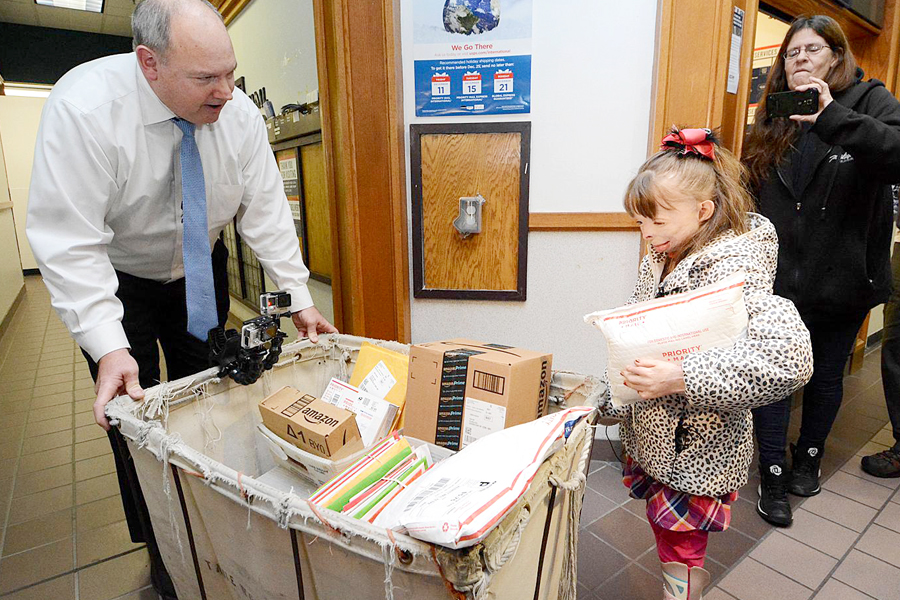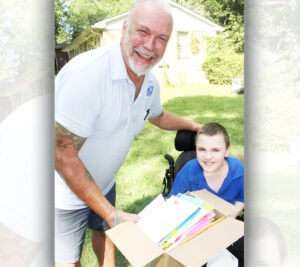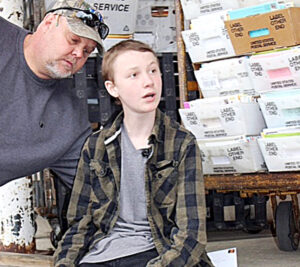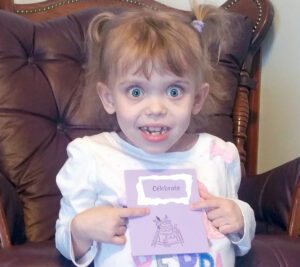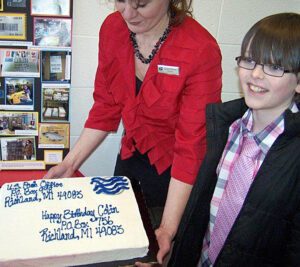It happens a lot these days.
A parent of a sick child goes on social media to ask people to send the youngster cards and letters of encouragement. The request goes viral, and soon the local Post Office is flooded with mail and packages from well-wishers.
What’s driving this practice?
It might have as much to do with science as anything else.
Pamela Rutledge, a psychologist who studies social media usage, said the act of doing for others triggers chemicals in the brain that allow people to feel rewarded.
“Sending a letter or card is a small price to pay for actions that have that kind of emotional and physical reward,” Rutledge said.
‘Everyone loves to get mail’
Postal Service employees who’ve responded to social media requests for mail agree it’s a fulfilling experience.
Last year, Molly Yates, a postal support employee in Frannie, WY, was one of many employees who mailed cards and letters to Skyler Longaker, a 5-year-old Washington state boy who has a birth defect that affects his brain’s growth.
Yates was responding to a viral Facebook post from Skyler’s mother Trine, who asked for postcards to decorate her son’s hospital room.
“Skyler’s smile captured my heart,” Yates said. “Everyone loves to get mail, especially children. This was such a simple way to make someone feel good.”
Paul Warrick, an employee development manager in Norman, OK, sent Skyler a package of goodies on behalf of his team.
“What Skylar was asking for — information about a place he might never see — excited us, because Oklahoma has so much to offer, and we were proud to share a piece of our world with him,” Warrick said.
Rutledge said responses like these show why requests for mail resonate in ways that other appeals cannot.
“When there are news stories, for example, about large crowds, it is distancing in spite of the obvious need because we feel that our actions can’t possibly address a problem,” she said. “With the individual acts of kindness, people are able to feel a connection to the child and the ‘ask’ is very small, something most people can easily do.”
‘Absolutely amazing’
USPS handled approximately 19.7 billion single pieces of First-Class Mail last year. There’s no way to know how many pieces were mailed in response to social media requests, but one thing is certain: These stories get lots of attention.
“We’ve never experienced anything like it before or since,” said Schenectady, NY, Postmaster John Reilly, whose office delivered approximately 1.7 million pieces of mail to Sa’fyre Terry, a young burn victim whose request for greeting cards received widespread press coverage in 2015.
“It brought out the best in our employees,” Reilly said.
The mailpieces become keepsakes for many of the children who receive them. Although Sa’fyre’s family donated many of the toys she received two years ago, they held onto her cards and letters.
Likewise, supporters of Aaron Stamper, a Kentucky teenager with leukemia, donated a storage pod for the 30,000 mailpieces that he received after his family requested greeting cards for his 16th birthday.
Other families have discovered goodwill has no expiration date.
Even though it’s been almost a year since Trine Longaker requested cards and letters for her son Skyler, he’s still getting mail.
“In a world where there is so much hurt going on, it was absolutely amazing to see the world come together for my little boy,” she said.
